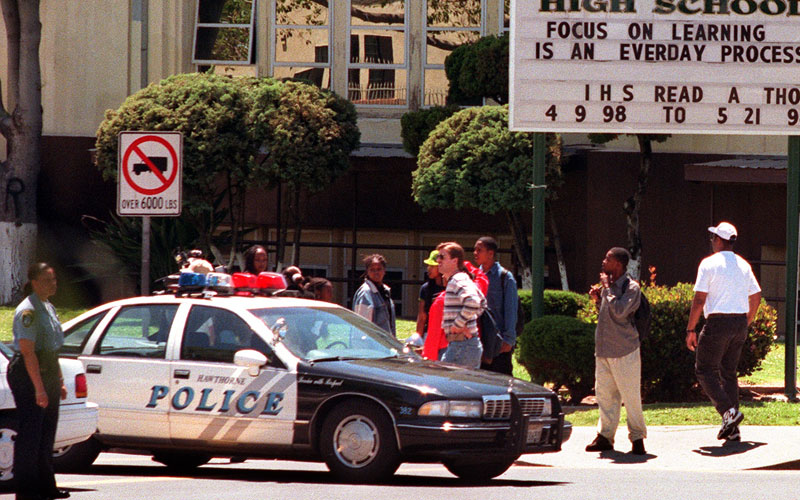
Photo: Getty
While the presence of police officers in Connecticut schools does not appear to contribute to a safer school climate or improved academic outcomes, it may contribute to more Latino students being arrested or referred to law enforcement, according to a research study by Connecticut Voices for Children.
The study examined the impact of school resource officers, who are police officials assigned to Connecticut schools.
Schools and boards of education may request school resource officers (SROs) with aims of improving school safety and academic achievement, but the study did not find evidence of such outcomes in the 2015-16 school year. On most measures of school safety it examined – such as the use of weapons, drugs, or alcohol; theft; and property damage – the average numbers of incidents of such behavior did not differ significantly between schools that did and did not have SROs. Academic performance, as measured by average test scores on Smarter Balanced test scores also did not differ significantly based on the presence of SROs.
However, the study did find statistically significant evidence that their presence may contribute to more students experiencing discipline. Students attending schools with SROs were at greater risk of discipline overall, and the average arrest rate of Latino students at schools with an SRO was six times greater than the average arrest rate of Latino students at schools without an SRO. In addition, schools with SROs disciplined students more often for behaviors that were likely not criminal. Schools with SROs reported higher levels of school policy violations, such as skipping class, insubordination, or using profanity. It is not clear from available data whether SROs participated in reporting these policy violations.
“While many schools look to school resource officers to improve school safety and education outcomes, these findings are troubling evidence that their presence may contribute to increased discipline for minor offenses and far greater arrest rates for Latino students,” said Camara Stokes Hudson, Associate Policy Fellow at Connecticut Voices for Children. “We need to ensure that the presence of SROs does not lead to unnecessary discipline or exacerbate existing inequalities in our education system.”
While just one in four (24%) of Connecticut schools has a school resource officer, the number of such officers increased by 29 percent between the 2012-13 and 2015-16 school years. Larger schools are more likely to have SROs than smaller schools.
The report recommended that schools districts with SROs should have publically accessible memoranda of understanding about the role of SROs, survey students about their experiences with SROs, and share information with students and parents about students’ rights. The organization also recommends that the Connecticut legislature request a study on SROs, including a review of student discipline rates by race, gender and disability status.
“These steps can help to ensure that students, parents, and school staff have an informed understanding of the role of school resource officers in their school and the potential impact interactions with SROs may have on different students,” said Lauren Ruth, Advocacy Director at Connecticut Voices for Children. “We need further investigation to explore how Connecticut children perceive their experiences with SROs and to understand how children may be affected by attending a school with an SRO versus a security guard.”
Connecticut Voices for Children is a research-based child advocacy organization working to ensure that all Connecticut children have an equitable opportunity to achieve their full potential. In furtherance of its mission, Connecticut Voices for Children produces high-quality research and analysis, promotes citizen education, advocates for policy change at the state and local level, and works to develop the next generation of leaders.









